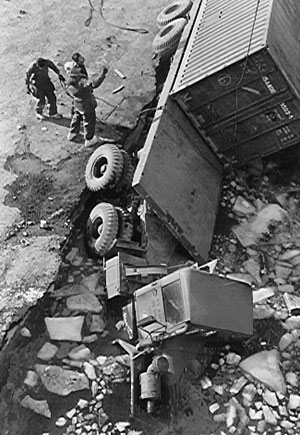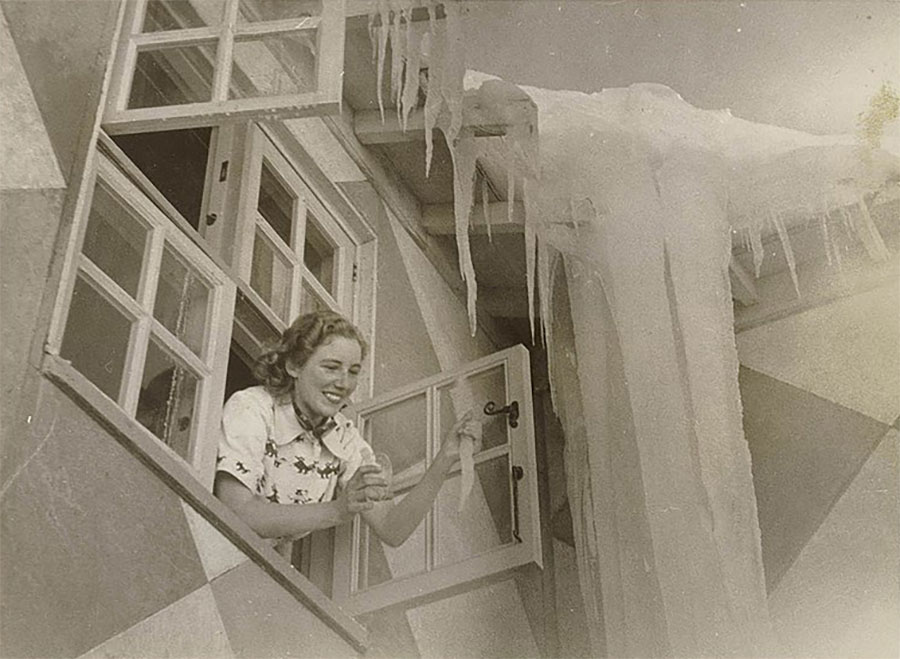Week 1 | Week 2 | Week 3 | Week 4 | Week 5
4.2

Circle of thin ice at the southern tip of Lake Baikal, probably caused by convection. From Wiki Commons – Image provided by the ISS Crew Earth Observations experiment and Image Science & Analysis Laboratory, Johnson Space Center. – NASA Earth Observatory, Public Domain.
Wellbeing and Care in leadership
The “I” in the following text is Francis Rogers, course coordinator alumni at CEMUS and activist.
Often, people who are deeply engaged in an issue they care about begin to believe it to be more important than themselves – that the needs of the people/living beings/planet they work with are more important than their own needs. When they make small decisions as to how to prioritise their time, they neglect needs: needs like alone time, time in nature or with family or friends who don’t seem to need them like their project does, time doing other hobbies which they do for the pure enjoyment of them – even basic needs like for breakfast, or for a glass of water. These people might believe that “the situation” they are working with is urgent (because it generally always is), so there is no time to prioritise “frivolous” activities they used to love (painting, making music, running, dancing, cooking good food, swimming, climbing trees, football, creative writing, and so on…). In so doing, they choose a world without art, sport, playfulness or relaxation. Because these people are not taking care of themselves first, they tend to become overwhelmed and burnt out, sometimes feeling trapped or resenting the project they began out of care. They may unwittingly contribute to a culture of burnout and unsustainable action.
They might deeply believe that everyone should have their needs met and have the chance to be happy, and put all their energy towards making this happen, all while denying their own needs and ignoring the double standard they hold themselves to. If they were in a crashing airplane, they would help the person next to them put on their oxygen mask, even as they themselves suffocate.

A cargo truck falls through an ice pier, McMurdo Station, Antarctica, February 1983. Randy C. Bunney, Great Circle Photography. CC-BY-SA2.5.
For some of you reading this, it might seem obvious. For others, perhaps it seems unrealistic given the severity of “the situation” – and perhaps it is. I don’t know your life. In any case, wherever you are and whatever your situation, a tool you may find useful when making daily decisions about how to spend your time is “checking in” with yourself:
- Breath
- How do you feel in your body?
- What do you need in this moment? (not what the person next to you needs, or “the situation” needs)
- What do you want to do? (this is not always the same as your initial impulse, or what your anxiety might be telling you to do)
To check in, you may need to tell the people you’re with that you need five minutes on your own. It might be that what you do want to do is to act on the anxiety you’ve been feeling about “the situation”, but maybe you need to eat first, or make sure you have a plan to take care of yourself after you have acted.
If what you feel is anxiety in your stomach, stress in your jaw or repressed emotions like anger or sadness around your eyes, what you might need is to take a longer time out to breath, be outside, journal, scream, cry, find someone to hug, ask for help, or meditate.
Meditation is not for everyone, but it is a tool which many people find helpful to calm anxiety or manage depression. You can find many different kinds of guided meditation for different purposes, and with different kinds of spiritual or ideological perspectives. Here, you can find a meditation for calming anxiety and coping with depression.
Asking for help could be the most difficult strategy, even if the people around you would be happy to help you, or you have access to organisations which are in place to support people facing your challenges. I have found it important to remember that telling others what I need grants them the agency to meet me where I am. By denying my needs, I’m pretending to be someone I am not, and allowing them to be complicit in hurting me when they might not even realise it.

Woman leans out of window of ice-covered Kosciuszko chalet, 1935, by State Library of New South Wales collection, no restrictions.
See also
Barnard Center for Research on Women. (2019). How to Support Harm-doers in Being Accountable. https://www.youtube.com/watch?v=AhANo6wzBAA
Sigur Rós, Alan Watts & Paul Corley. (2022). The Art of Meditation. https://www.youtube.com/watch?v=lZMz5-PV92ke
© Francis Rogers, CEMUS and Uppsala University
